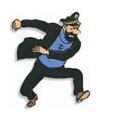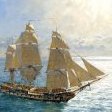-
Posts
541 -
Joined
-
Last visited
Profile Information
-
Gender
Male
-
Location
Alkmaar, Holland
-
Interests
Dutch 17th century shipbuilding
Airplanes
Flightsimulation
Recent Profile Visitors
-
 Mike Y reacted to a post in a topic:
A Dutch 17th century pleasure vessel by Ab Hoving - CARD
Mike Y reacted to a post in a topic:
A Dutch 17th century pleasure vessel by Ab Hoving - CARD
-
 Mike Y reacted to a post in a topic:
A Dutch 17th century pleasure vessel by Ab Hoving - CARD
Mike Y reacted to a post in a topic:
A Dutch 17th century pleasure vessel by Ab Hoving - CARD
-
 Mike Y reacted to a post in a topic:
A Dutch 17th century pleasure vessel by Ab Hoving - CARD
Mike Y reacted to a post in a topic:
A Dutch 17th century pleasure vessel by Ab Hoving - CARD
-
 Mike Y reacted to a post in a topic:
A Dutch 17th century pleasure vessel by Ab Hoving - CARD
Mike Y reacted to a post in a topic:
A Dutch 17th century pleasure vessel by Ab Hoving - CARD
-
 Mike Y reacted to a post in a topic:
A Dutch 17th century pleasure vessel by Ab Hoving - CARD
Mike Y reacted to a post in a topic:
A Dutch 17th century pleasure vessel by Ab Hoving - CARD
-
 Ab Hoving reacted to a post in a topic:
DUTCH PINAS 1590 by tartane - FINISHED - scale 1:87 - reconstruction
Ab Hoving reacted to a post in a topic:
DUTCH PINAS 1590 by tartane - FINISHED - scale 1:87 - reconstruction
-
 Ab Hoving reacted to a post in a topic:
17th-Century Speeljacht by 0Seahorse - FINISHED - scale 1/50 - CARD
Ab Hoving reacted to a post in a topic:
17th-Century Speeljacht by 0Seahorse - FINISHED - scale 1/50 - CARD
-
 Ab Hoving reacted to a post in a topic:
Mary Rose by Baker - scale 1/50 - "Your Noblest Shippe"
Ab Hoving reacted to a post in a topic:
Mary Rose by Baker - scale 1/50 - "Your Noblest Shippe"
-

Hawker Hurricane Mk. I by ccoyle - Halinski - 1/33 - CARD
Ab Hoving replied to ccoyle's topic in Non-ship/categorised builds
That's the spirit! -

Hawker Hurricane Mk. I by ccoyle - Halinski - 1/33 - CARD
Ab Hoving replied to ccoyle's topic in Non-ship/categorised builds
I remember now I had this problem too. But if you want to show the hood in the backwards position, you don't see the mess right under it. I must have repressed this, because I never saw the mistake again. I always looked at the model with satisfaction, even though much of the paint has been eaten by now. Perhaps I have to do it again, but there are so many other things I like and so little time... Pity to leave a good model unfinished. -
 Ab Hoving reacted to a post in a topic:
Hawker Hurricane Mk. I by ccoyle - Halinski - 1/33 - CARD
Ab Hoving reacted to a post in a topic:
Hawker Hurricane Mk. I by ccoyle - Halinski - 1/33 - CARD
-

Hawker Hurricane Mk. I by ccoyle - Halinski - 1/33 - CARD
Ab Hoving replied to ccoyle's topic in Non-ship/categorised builds
Don't say I didn't warn you about the fitting of the outer skin. Any slight mistake is punished mercilessly here. A hard lesson to learn. Ab -
 Ab Hoving reacted to a post in a topic:
Cat Esther by GrandpaPhil - 1/64 - CARD
Ab Hoving reacted to a post in a topic:
Cat Esther by GrandpaPhil - 1/64 - CARD
-
 Ab Hoving reacted to a post in a topic:
Hawker Hurricane Mk. I by ccoyle - Halinski - 1/33 - CARD
Ab Hoving reacted to a post in a topic:
Hawker Hurricane Mk. I by ccoyle - Halinski - 1/33 - CARD
-

Hawker Hurricane Mk. I by ccoyle - Halinski - 1/33 - CARD
Ab Hoving replied to ccoyle's topic in Non-ship/categorised builds
This was the first Halinski kit I ever made, years ago. I was deeply impressed by the detailing and the way everything fitted together like a glove. Especially the outer skin, covering the cockpit made me aware that every mistake made on the inside had disastrous results for the outside. I learned sanding a model here. (I never use laser cut frames) Many, many Halinski models followed. By now the model is still on the shelf, but it has been heavily attacked by paper fishes, which seem to especially like the printing ink. And though much of the color has faded nowadays I still cannot get myself so far as to throw the model into the dustbin. It was a wonderful experience building a top-kit like this one and I am looking forward for your report. -
 Ab Hoving reacted to a post in a topic:
Roter Löwe 1597 by Ondras71
Ab Hoving reacted to a post in a topic:
Roter Löwe 1597 by Ondras71
-
 Ab Hoving reacted to a post in a topic:
Roter Löwe 1597 by Ondras71
Ab Hoving reacted to a post in a topic:
Roter Löwe 1597 by Ondras71
-
 Ab Hoving reacted to a post in a topic:
Roter Löwe 1597 by Ondras71
Ab Hoving reacted to a post in a topic:
Roter Löwe 1597 by Ondras71
-
Hello GrandpaPhil, Nice to see that you take the challenge of the cat. And even with corrugated board. I did not know it was possible. I always held that material for inferior, but one can obviously be wrong. One piece of advise: Use more frames in the midship part. In the course of building you will often hold the model in one hand or between your knees (I do that a lot), adding or adjusting things. The chances that you will press too hard and squeeze the model are high. Good luck with this project, I will follow with interest (I never built with corrugated board). Ab
-
Well, in that case: (here come the commercials) wait for my new book, containing several tutorials for scratch build paper models, like for instance this one: smalschip.mp4 Prepared frames and hull sheathing, rigging details, etc. A perfect model to enter the field of freedom! :-)) Soon to be on the market. Ab
-

Ship in trouble by Ab Hoving - FINISHED
Ab Hoving replied to Ab Hoving's topic in - Build logs for subjects built 1501 - 1750
Yes GrandpaPhil, the models in the Merchant book are made by Herbert Tomesen (Artitec). He uses cast resin as a base for his models . As far as I know he first makes a solid wooden plug, of which he makes molds which he details with polystyrene. Thus he can cast several copies from one design for his scenery modeling work like https://artitec.nl/v-o-c/ . The models in my next book 'Dutch 17th Century Shipmodels in Paper' are all in paper. -

Ship in trouble by Ab Hoving - FINISHED
Ab Hoving replied to Ab Hoving's topic in - Build logs for subjects built 1501 - 1750
Just send me a PM Marc and which picture you like. What I want you to know is that the models in the Merchant book are made by Herbert Tomesen van Artitec and executed in plastic. No problem, I'm sure Emiel has high-res copies of the plates. Ab -

Ship in trouble by Ab Hoving - FINISHED
Ab Hoving replied to Ab Hoving's topic in - Build logs for subjects built 1501 - 1750
Thanks @hollowneck and @Ondras71, Oh, Ondras, if you want a higher resolution, just call. Ab
About us
Modelshipworld - Advancing Ship Modeling through Research
SSL Secured
Your security is important for us so this Website is SSL-Secured
NRG Mailing Address
Nautical Research Guild
237 South Lincoln Street
Westmont IL, 60559-1917
Model Ship World ® and the MSW logo are Registered Trademarks, and belong to the Nautical Research Guild (United States Patent and Trademark Office: No. 6,929,264 & No. 6,929,274, registered Dec. 20, 2022)
Helpful Links
About the NRG
If you enjoy building ship models that are historically accurate as well as beautiful, then The Nautical Research Guild (NRG) is just right for you.
The Guild is a non-profit educational organization whose mission is to “Advance Ship Modeling Through Research”. We provide support to our members in their efforts to raise the quality of their model ships.
The Nautical Research Guild has published our world-renowned quarterly magazine, The Nautical Research Journal, since 1955. The pages of the Journal are full of articles by accomplished ship modelers who show you how they create those exquisite details on their models, and by maritime historians who show you the correct details to build. The Journal is available in both print and digital editions. Go to the NRG web site (www.thenrg.org) to download a complimentary digital copy of the Journal. The NRG also publishes plan sets, books and compilations of back issues of the Journal and the former Ships in Scale and Model Ship Builder magazines.







.thumb.jpeg.fc5d633a7b34428fcf19419a73d56d55.jpeg)
.thumb.jpg.891f66d64fd4486179970eca1dfee43e.jpg)

